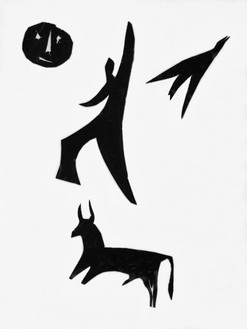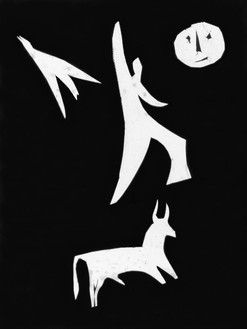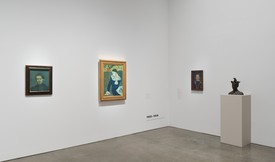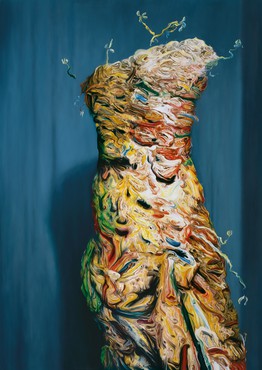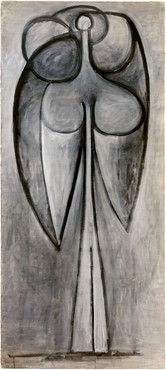About
We should do something together. I’ll cut out little figures and you’ll take photos. You’ll give weight to the shadows using the sun. You’ll have to take thousands of shots.
—Pablo Picasso
For the inauguration of the newly expanded Geneva gallery, Gagosian is pleased to announce Villers | Picasso, an exhibition that traces the artistic collaboration between André Villers and Pablo Picasso and presents Villers’s latest work.
Bringing together photographic works, sculptures in paper and cut-out metal, and paintings, the exhibition presents a fresh perspective on the fertile dialogue and friendship between the two artists. It explores a unique occurrence in Picasso’s oeuvre: Villers was the only photographer whom Picasso fully integrated into his creative process, although he worked with many others, including Man Ray, Dora Maar, Brassaï, and David Douglas Duncan. This is also the gallery’s first in-depth presentation of Villers’s work.
Picasso met Villers in March 1953, while working at a ceramics studio in Vallauris, France. Diagnosed with bone tuberculosis, Villers had been residing at the village sanatorium since 1947. He was passionate about photography and devoted his first series to images of the premises and residents. The two men immediately bonded. Picasso took instant interest in Villers’s photographs and proposed that they explore working together. Ever since his Cubist period, photography had become Picasso’s favorite “laboratory” for his sculpture, as both mediums allowed for exploration of solids and voids, form and space, and light and shadow. Over ten years, Picasso and Villers conducted photographic experiments that sought to transcend the boundaries between photography and sculpture. Picasso traced, cut, pinned, and accented, creating paper “negatives” which Villers then photographed, printed, and otherwise transformed to make multiple prints, photograms, interpretations, stagings, and transfers. Hundreds of images resulted. The publication of the book Diurnes in 1962, with a preface by poet Jacques Prévert, was the culmination of their exceptional decade of joint investigation: thirty plates were selected from among some seven hundred photograms of masks, animals, and group figure studies made between 1954 and 1961.
«Il faudra que nous fassions quelque chose tous les deux. Je découperai des petits personnages et tu feras des photos. Avec le soleil, tu donneras de l'importance aux ombres, il faudra que tu fasses des milliers de clichés»
—Pablo Picasso
Pour l’inauguration de son nouvel espace à Genève, Gagosian a le plaisir de présenter Villers | Picasso, une exposition qui retrace la collaboration artistique entre André Villers et Pablo Picasso.
En rassemblant oeuvres photographiques, sculptures en papier ou en métal découpé et peintures, l’exposition présente de manière inédite le dialogue et l’amitié entre les deux artistes. Il s’agit d’une expérience unique dans l’œuvre de Picasso car s’il a pu collaborer avec Man Ray, Dora Maar, Brassaï, ou David Douglas Duncan à différents moments de son parcours, jamais aucun de ces photographes n’a été véritablement associé par l’artiste à son travail de création. C’est également la première fois que la galerie expose l’œuvre de Villers de manière aussi exhaustive.
Picasso fait la connaissance d’André Villers en mars 1953 alors qu’il travaille à ses céramiques chez un potier de Vallauris. Atteint d’une tuberculeuse osseuse, Villers, séjournait au sanatorium du village depuis 1947. Passionné de photographie, il consacre ses premières sorties à prendre des clichés des lieux et habitants. Les deux hommes se lient dès cet instant. Picasso s’intéresse vite aux photos de Villers et lui propose de s’engager dans une expérimentation photographique d’ampleur. Pour Picasso la photographie constitue depuis la période cubiste un «laboratoire» de prédilection pour approfondir son travail de sculpture : le plein et le vide, la forme et l’espace, la lumière et ses ombres sont en effet les moyens expressifs communs à la photographie et la sculpture. Avec Villers, durant dix années, ils mènent des expériences photographiques cherchant à dépasser les frontières entre photographie et sculpture. Picasso trace, découpe, épingle, et rehausse créant des ‘négatifs’ de papier que Villers photographie, tire et transforme, déclinant clichés, interprétations, mises en scène, transferts et photogrammes. Des centaines d’images sont ainsi réalisées. La publication de l'album Diurnes en 1962, préfacé par le poète Jacques Prévert, scelle cette exceptionnelle décennie de recherche : 30 planches sont sélectionnées parmi un ensemble de près de 700 photogrammes—masques, têtes, animaux, combinaisons de figures—réalisés ensemble par Picasso et Villers entre 1954 à 1961.
Les enseignements de cette collaboration accompagneront la création de l’oeuvre sculpté de Picasso avec la série des papiers pliés et des tôles découpées et se poursuivra dans sa peinture. Pour Villers, cette collaboration sera fondatrice pour ses expériences photographiques plasticiennes ultérieures. Créant ses propre négatifs à partir de découpages de magazines, de journaux, de papier calque, Villers les «peint» par solarisation ou jets de révélateurs, réalise des effets de transparence, de superpositions d’images ou de textes, intègre dans ses tirages des pièces de carton, papier, toile découpés, les rehausse au pastel.
Depuis peu, Villers fabrique de petites sculptures éphémères, avec du papier, des ciseaux, ainsi que parfois des fragments d’images de maîtres anciens, qu’il met en scène et photographie numériquement, la dernière évolution de ses inventions à techniques mixtes initiées avec Picasso.
Un catalogue entièrement illustré accompagnera l’exposition avec notamment la réédition des textes historiques “Photobiographie” d’André Villers et “Diurnes” par Jacques Prévert.
Share
Artists
Behind the Art
A Foreigner Called Picasso
Join president of the Picasso Museum, Paris, Cécile Debray; curator, writer, biographer, and historian Annie Cohen-Solal; art historian Vérane Tasseau; and Gagosian director Serena Cattaneo Adorno as they discuss A Foreigner Called Picasso. Organized in association with the Musée national Picasso–Paris and the Palais de la Porte Dorée–Musée national de l’histoire de l’immigration, Paris, the exhibition reframes our perception of Picasso and focuses on his status as a permanent foreigner in France.
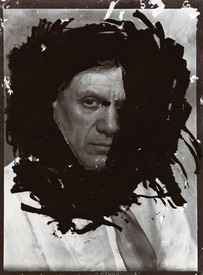
A Foreigner Called Picasso
Cocurator of the exhibition A Foreigner Called Picasso, at Gagosian, New York, Annie Cohen-Solal writes about the genesis of the project, her commitment to the figure of the outsider, and Picasso’s enduring relevance to matters geopolitical and sociological.
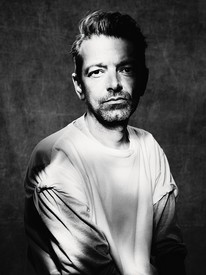
Fashion and Art: Pieter Mulier
Pieter Mulier, creative director of Alaïa, presented his second collection for the legendary house in Paris in January 2022. After the presentation, Mulier spoke with Derek Blasberg about the show’s inspirations, including a series of ceramics by Pablo Picasso, and about his profound reverence for the intimacy and artistry of the atelier.
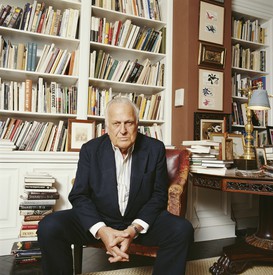
The Art of Biography: Sir John Richardson’s “The Minotaur Years”
Pepe Karmel celebrates the release of A Life of Picasso IV: The Minotaur Years, 1933–1943, the final installment of Sir John Richardson’s magisterial biography.
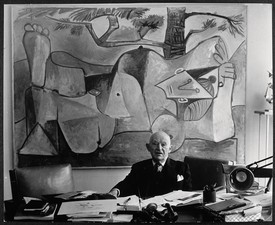
Game Changer
Daniel-Henry Kahnweiler
Michael Cary pays homage to the visionary dealer Daniel-Henry Kahnweiler (1884–1979).

Game Changer
Grace McCann Morley
Berit Potter pays homage to the ardent museum leader who transformed San Francisco’s relationship to modern art.
